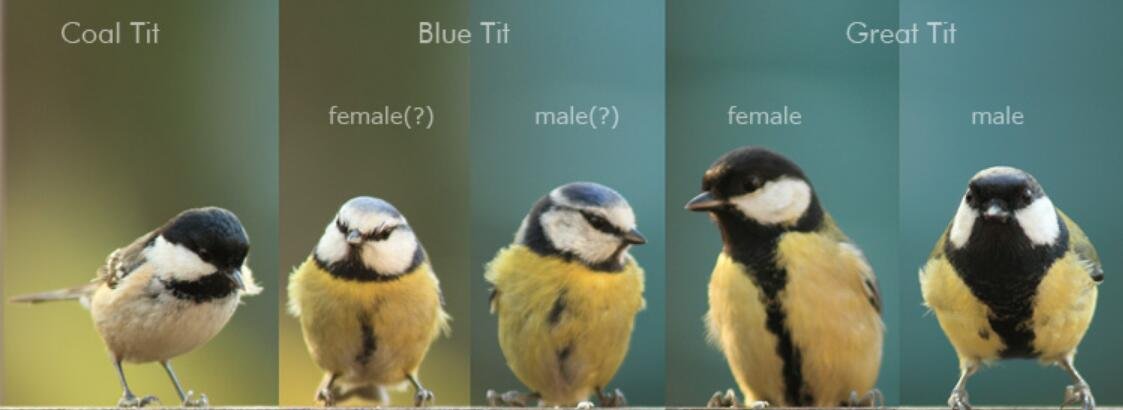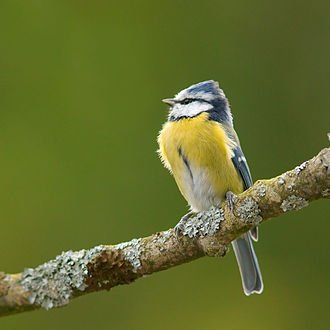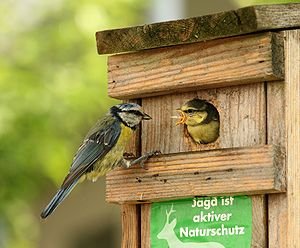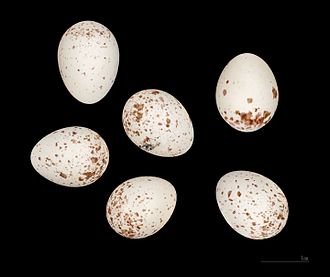Latin name:Cyanistes caeruleus is a small passerine bird in the tit family, about 12 cm (4.7 in), long with a wingspan of 18 cm (7.1 in)and weighs about 11 g (0.39 oz), it is easily recognisable by its blue and yellow plumage.Usually resident and not migratory birds, they are widespread and a common resident breeder throughout temperate and subarctic Europe and western Asia.

Description
Blue tit has an azure-blue crown and blue line through the eye,and encircling the white cheeks to the chin,giving the bird a very distinctive appearance.The forehead and the bar on the wing are white. The nape, wings and tail are blue and the back is yellowish green.The underparts is mostly sulphur-yellow with a dark line down the abdomen. The beak is black, the feet grayish blue, and the irides are dark brown. The nestlings are noticeably more yellow.

Behaviour
Blue tie and great tits form mixed winter flocks ,the former are the better gymnasts in the slender twigs.They usually roosts in ivy or evergreens ,but in bad weather will nest a small hole.The blue tits are very flexible and can hang from almost anywhere.The average life expectancy is about 1.5 years.
This is a common and popular European garden bird, due to its perky acrobatic performances when feeding on nuts or suet. It swings beneath the holder, calling “tee, tee, tee” or a scolding “churr”.

Diet
Blue tit is a valuable destroyer of pests, they like to eat buds of various trees and pull them out to attract insects.No species, however, destroys more coccids and aphids, the worst foes of many plants.
Breeding
Blue tit will nest in any hole in a tree,wall or stump,often competing with house sparrows or great tits for the site. the same hole is returned to year after year, and when one pair dies another takes possession.
When protecting the eggs they raises crest ,but is a sign of excitement rather than anger.
The nesting material is usually moss, wool, hair and feathers, and the eggs are laid in April or May. The number is often very large, but seven or eight are normal, It is not unusual for a single bird to feed the chicks in the nest at a rate of one feed every 90 seconds during the height of the breeding season. In winter they form flocks with other tit species.

Sounds and song






